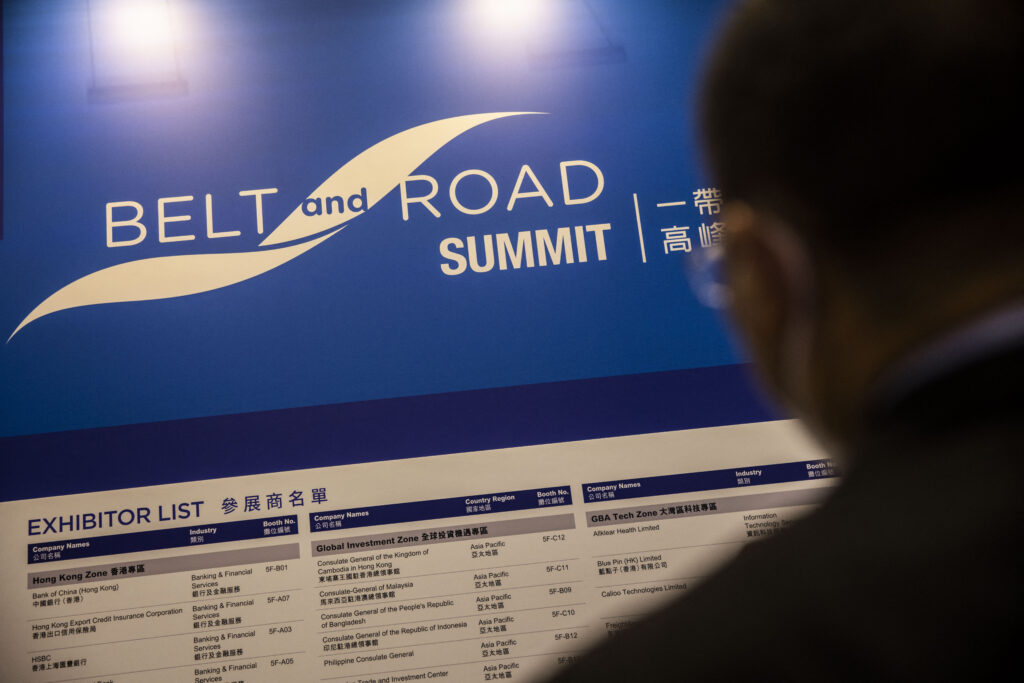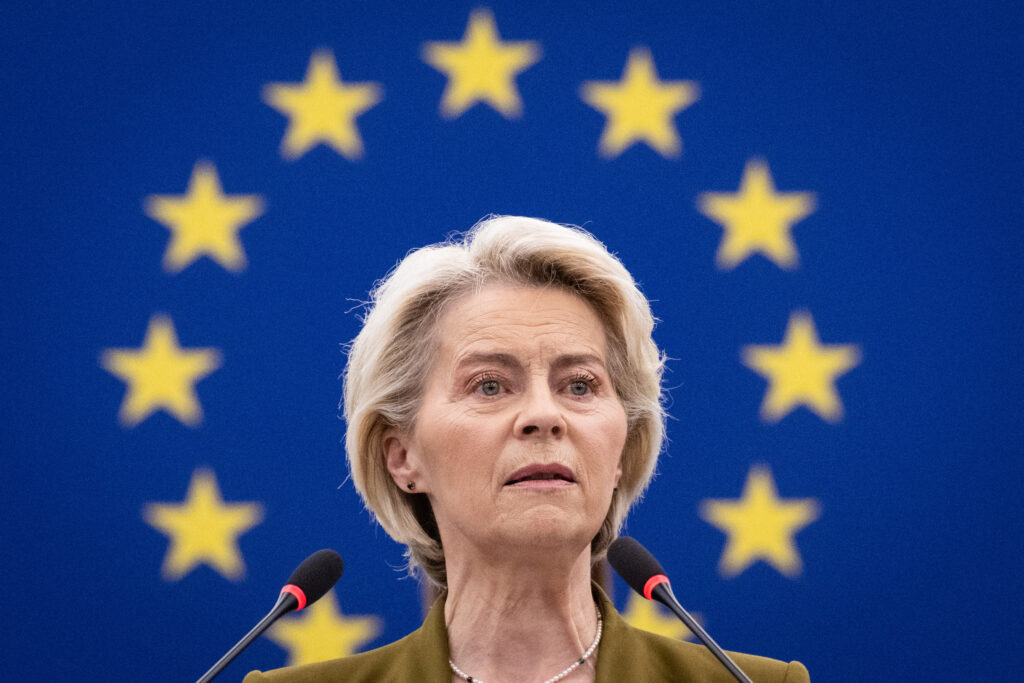By Aisha Al-Sarihi (Research Fellow, MEI); Ehsan Rasoulinezhad (Associate Professor, Faculty of World Studies, University of Tehran); Jinseok Sung (Research Fellow, ESI)
Hydrogen has emerged as a prominent — if somewhat untested — option in the journey towards green transformation, and Gulf Arab states are investing huge resources to try and tap its potential.
In 2023, for instance, Saudi Arabia invested USD8.4 billion in a green hydrogen plant to be built in the futuristic city of Neom. The United Arab Emirates, meanwhile, showcased its first operational Green Hydrogen project at EXPO 2020 Dubai. Oman has also climbed aboard the bandwagon, establishing a national hydrogen company, Hydrom, in 2022, and designating locations for hydrogen production that are ready for foreign direct investments. All told, the region is home to 14 hydrogen projects that are scheduled to go online by the end of this decade.
The driving force behind these efforts is the Gulf states’ aspiration to generate a new stream of export revenues as they pursue economic diversification beyond oil and gas. An added incentive is that if they can produce hydrogen at scale, they can use it to generate power domestically, freeing up oil and gas — the Gulf states are among the world’s biggest energy consumers — for export, further lining their coffers.
A caveat remains, however: How realistic are these ambitions?
Vast Potential Masks Fundamental Challenges
To an extent, Gulf Arab states have all the ingredients needed to build a competitive position in the emerging hydrogen market. These include their strategic position as the world’s lowest-cost producers of oil, natural gas, and renewables. Gulf hydrogen prices fall at the lower end of the global cost spectrum, which ranges between US$2 and US$7 per kg. Their huge hydrocarbon revenues allow them to accommodate state-led, large-scale investments in hydrogen. Armed with decades of experience in hydrocarbon sectors, they can also capitalise on easily-transferable skills from the oil and gas industry. Infrastructure plays a part, too: Existing hydrocarbon facilities and ports provide readily-accessible production and export avenues.
That said, these ambitions face many obstacles. Hydrogen’s volatility presents transportation and storage challenges, for one. The gas requires careful handling — a few explosions have already occurred in Austria, Germany, and elsewhere, and this may deter investors from banking on hydrogen until more confidence around its safety is built.
Further, while the demand for hydrogen is not new, the demand for clean hydrogen is relatively limited. Around 96 per cent of today’s hydrogen demand is met by hydrocarbon-driven production – renewable energy accounts for only 1 per cent of output. In a net-zero scenario, clean hydrogen production should increase six times from current levels. But while clean hydrogen production and utilisation have already begun in some places, it is not a traded commodity today: The industry’s capital-intensive costs – production, storage, transmission, and export – have discouraged many possible importers from committing to long-term investments in infrastructure, or long-term purchase contracts.
Saudi Aramco has noted these challenges. “It is very difficult to identify any agreement in Europe [for blue hydrogen]…and they explained it’s because of the high cost,” said Amin Nasser, the company’s Chief Executive. While Saudi Aramco hopes to use liquified natural gas (LNG) from its untapped Jafurah field to meet rising domestic demand and produce blue hydrogen for export, it is weighing whether to just export the LNG instead because of the lack of a long-term contract commitment from major buyers.
Another factor is the type of hydrogen produced itself. As mentioned, much of current production (grey hydrogen) relies on hydrocarbon-based methods. Blue hydrogen also requires natural gas, but its impact is mitigated through the use of carbon capture and storage (CCS) technologies. However, CCS is an untested emissions-lowering method. It is also not commercially viable, and requires heavy subsidies from governments. There are currently only three major CCS facilities in the Gulf, equivalent to 10 per cent of global capture capacity: Two in Saudi Arabia — Saudi Aramco’s Uthmaniyah CO2-EOR Demonstration Project, and the Saudi Basic Industries Corporation’s Jubail CO2 to chemicals plant — and a third in the UAE, the al-Reyadah project. To scale up blue hydrogen production, the Gulf countries will have to significantly bolster CCS capacity. Another challenge is that CCS is now mainly used to lower emissions from extraction and use of oil, and pivoting their use to production of blue hydrogen requires a solid business case.
Green hydrogen, which has zero direct emissions, relies wholly on renewable energy. But Gulf capacity for this is far below what is needed. Today, their output is around 4,000 MW, while their green hydrogen production target for 2030 requires 40-60 GW — a nearly 60-fold rise. Furthermore, as one of the most water-stressed regions globally, it is heavily reliant on desalinated water. Production of one kilogramme of green hydrogen requires around nine litres of freshwater. Blue hydrogen requires even more: 12-19 litres for one kg. Expanding the hydrogen industry on a large scale would thus require parallel expansion of desalination plants, which need large amounts of power — currently generated largely by oil and gas, raising questions about how green it will be.
All this leads to doubt over whether hydrogen is the game-changer it has been touted to be. The International Energy Agency, International Renewable Energy Agency, and Hydrogen Council project that hydrogen could meet only around 22 per cent of global energy demand by 2050. While hydrogen has the potential to replace hydrocarbons in various sectors, a big chunk of the current hydrocarbon market, especially road transport and residential energy use, will rely on electrification and renewables (e.g. solar, wind), rather than clean hydrogen, affecting demand.
On the surface, this suggests that the Gulf countries might be at risk of placing misplaced bets on the potential for hydrogen to be a revenue source that will buttress them against declining oil and gas sales.
Potential for More Competition
According to IRENA, successful development of hydrogen and other alternative energy sources is likely to alter the power and influence of some states and regions relative to others, just as the current geopolitical map has been largely shaped by fossil fuels.
In anticipation of this re-ordering, hydrogen has become a new field for competition between global powers. The Gulf nations’ recent shift to Asian markets, which are becoming the epicentre of energy demand, goes beyond hydrocarbons, and includes other energy sources, including hydrogen. Japan, China, South Korea, and South-east Asia are becoming particularly central to the Gulf’s emerging international hydrogen partnerships. President Xi Jinping’s visit to Riyadh in December 2022, highlighted by the First China-Arab States Summit, and the China-GCC Summit, resulted in a flurry of agreements encompassing green energy, green hydrogen, and information technology, among others. Recently, the UAE’s ADNOC delivered its first commercial shipment of low-carbon ammonia to Japan’s Mitsui & Co, following similar demonstration cargoes received by the country from Saudi Aramco and SABIC last year.
Despite the perceived decline of US interest in the Gulf due to the boom in American oil production, there are clear signs that Washington is not ignoring these emerging shifts in Gulf energy relations. On the sidelines of the G20 leaders’ summit in New Delhi last year, the US spearheaded the signing of the India-Middle East-Europe Economic Corridor (Imec), which includes plans for a pipeline to facilitate hydrogen exports from India to Europe. Although the pact is not binding, and design and financial details are yet to be finalised, Imec signals the emergence of an American strategy to counter China’s expanding economic and diplomatic role in the Gulf. Such external initiatives are also likely to trigger competition between the Gulf states — each of which is seeking to secure trade and political influence as the world shifts away from hydrocarbons.
The race among them to become leaders in the global hydrogen market is a tangible result of this. Each has eschewed cooperation in favour of competition, with diverse national institutions, strategies, and companies to oversee hydrogen production. The only exception is Oman’s joint consortia with Kuwait and the UAE. This competition will create avenues for China to penetrate the Gulf market, especially with countries not engaged in deals with the US, countering Washington’s efforts to limit Beijing’s presence in the region. If the competition between Gulf countries persists — a probability due to differences in natural resources, human capital, and financial capabilities — they risk losing the advantages they gained through their cooperative efforts under OPEC in controlling hydrogen prices.
Hype or Opportunity?
Despite the many risks and uncertainties surrounding the future of hydrogen, Gulf countries see it as an opportunity to maintain their status as global energy leaders. Unlike other clean energy sources, the region does not need to start from scratch and abandon fossil fuels entirely to develop its hydrogen sector, since the gas can be generated from both hydrocarbons and renewable energy.
Additionally, existing hydrocarbon facilities, such as natural gas power plants and natural gas pipelines, can be reconfigured for hydrogen use and transmission. Therefore, in a worst-case scenario, if the hydrogen industry falters, the investments made by Gulf countries would not result in substantial losses. In fact, in comparison with investment in other energy projects, such as oil, gas, petrochemical, EV, wind and solar, investment in hydrogen is relatively economical. It costs over US$10 billion to build a new oil refinery, for example.
The bet the Gulf states are placing, then, is two-fold. The first is that their expertise and investment in oil and gas will be pivotal when it comes to hydrogen. Second, that the market will flourish despite the challenges it faces — the fact that there were close to 300 clean hydrogen projects operational worldwide at the end of 2023 suggests they may be on the right track. If they are proven right, the region will be well-placed to take pole position and be at the forefront of the new energy landscape, just as it was for the old one.
Image: Canva
About the Authors
Dr Ehsan Rasoulinezhad is an associate professor of economics at the Faculty of World Studies of University of Tehran, where he has been since 2015. Since 2020, he has served as chief researcher at the university. Much of his work has been on improving the understanding and promoting sustainable development, mainly through the application of statistics and econometric evaluation.
Dr Jinseok Sung is Research Fellow at Energy Studies Institute, National University of Singapore. Prior to his current appointment, he was Research Professor at the Center for International Area Studies and Lecturer at the department of BRICS, at Hankuk University of Foreign Studies. Before his experience at the university, he worked as a Research Fellow at the Department of Political Science and Diplomacy at Hallym University of Graduate Studies, both located in Seoul, South Korea. He was also Visiting Researcher at the Institute for Emerging Economies (BOFIT), a research center at the Bank of Finland in Helsinki.
Jinseok participated in various research projects of organisations in different countries. His research mainly focuses on the global natural gas/LNG market and energy markets in the Asia Pacific region and Eurasian countries.
Jinseok holds a Ph.D. in World Economy and an M.Sc. in Oil & Gas Business from Gubkin Russian State University of Oil and Gas in Moscow, Russia. He received a B.A. in Economics from Hanyang University in South Korea.





